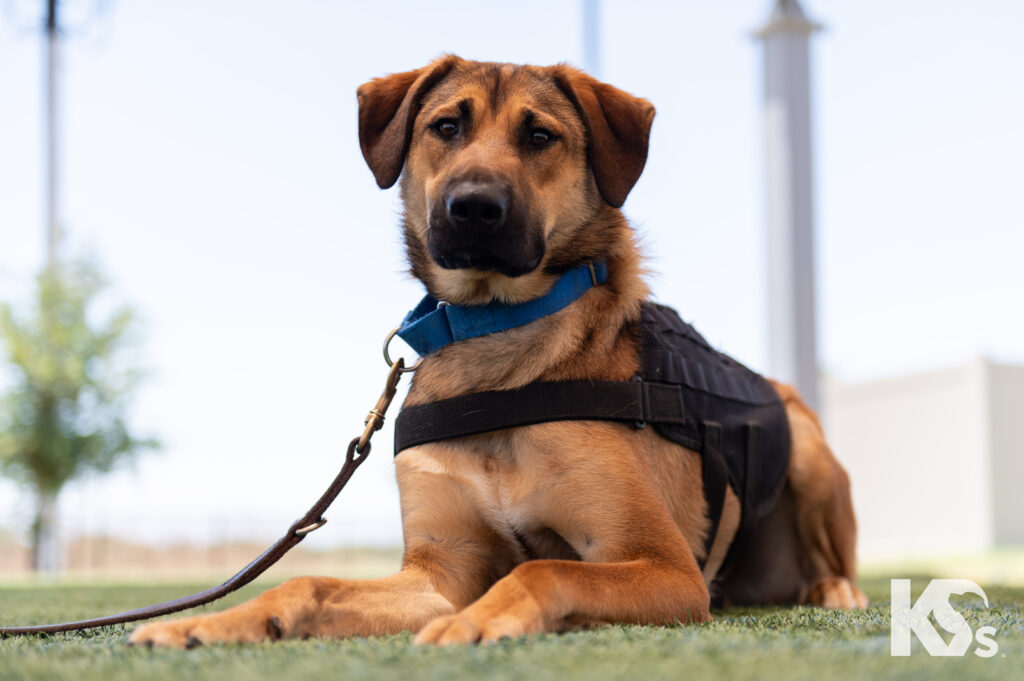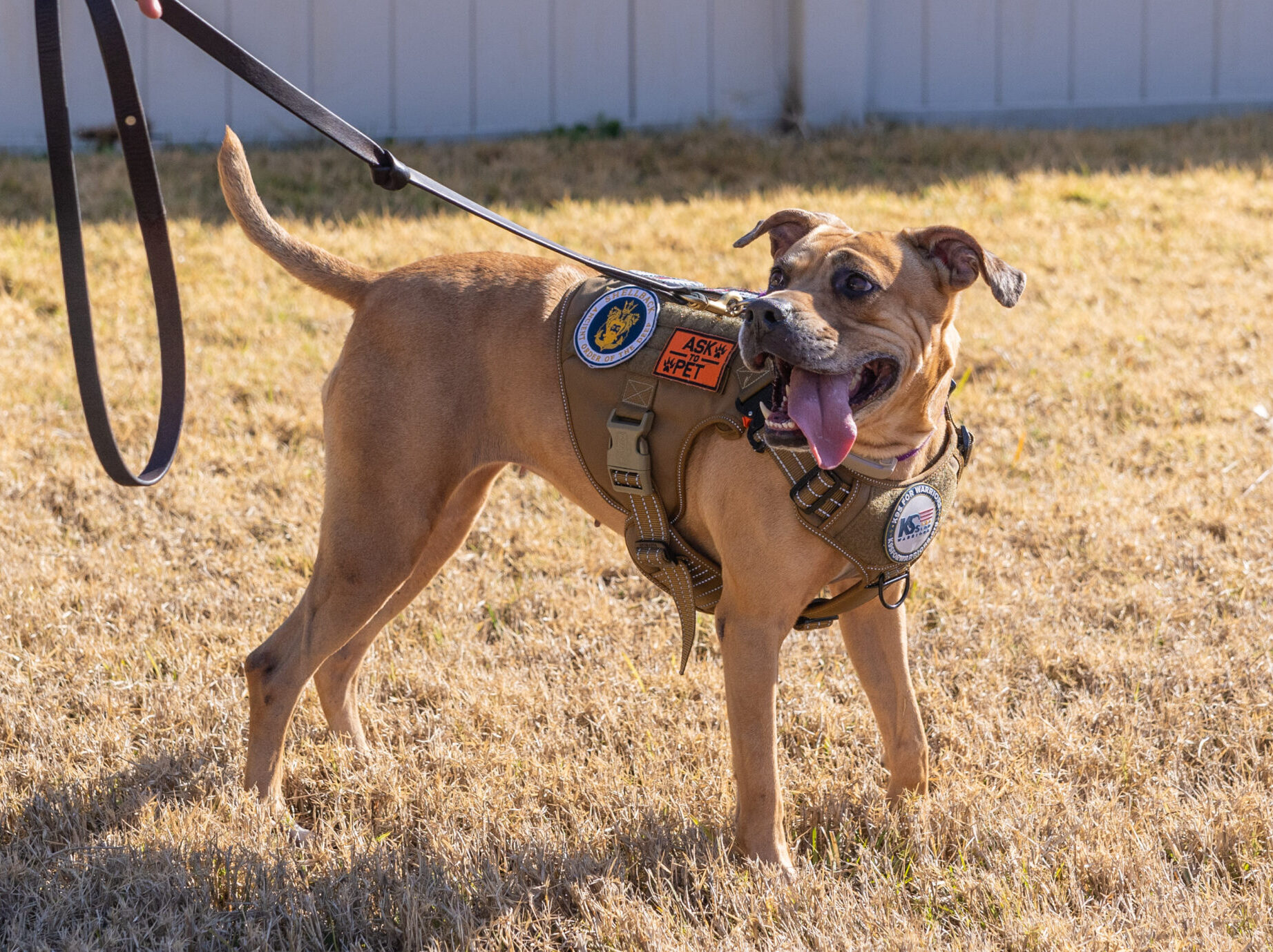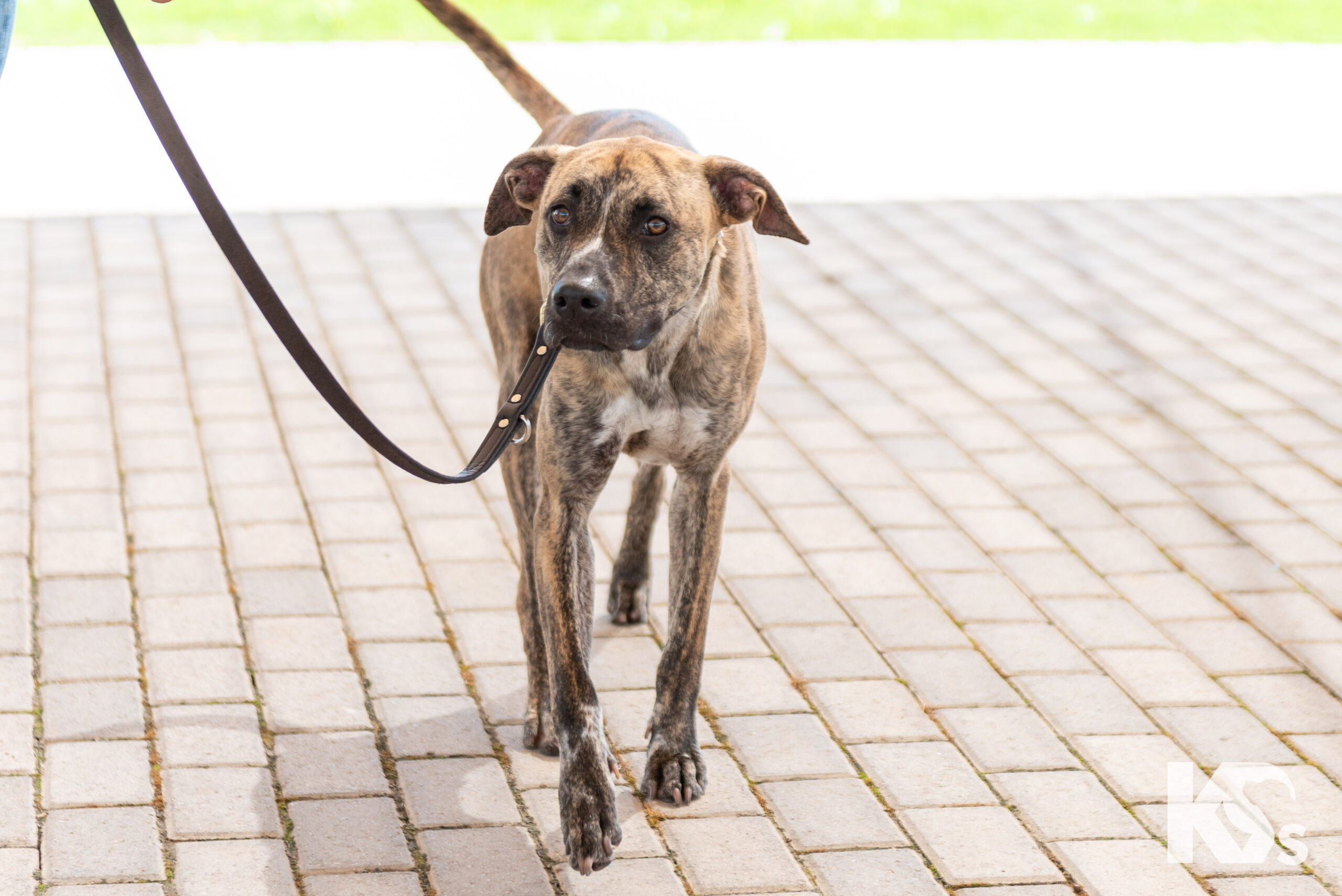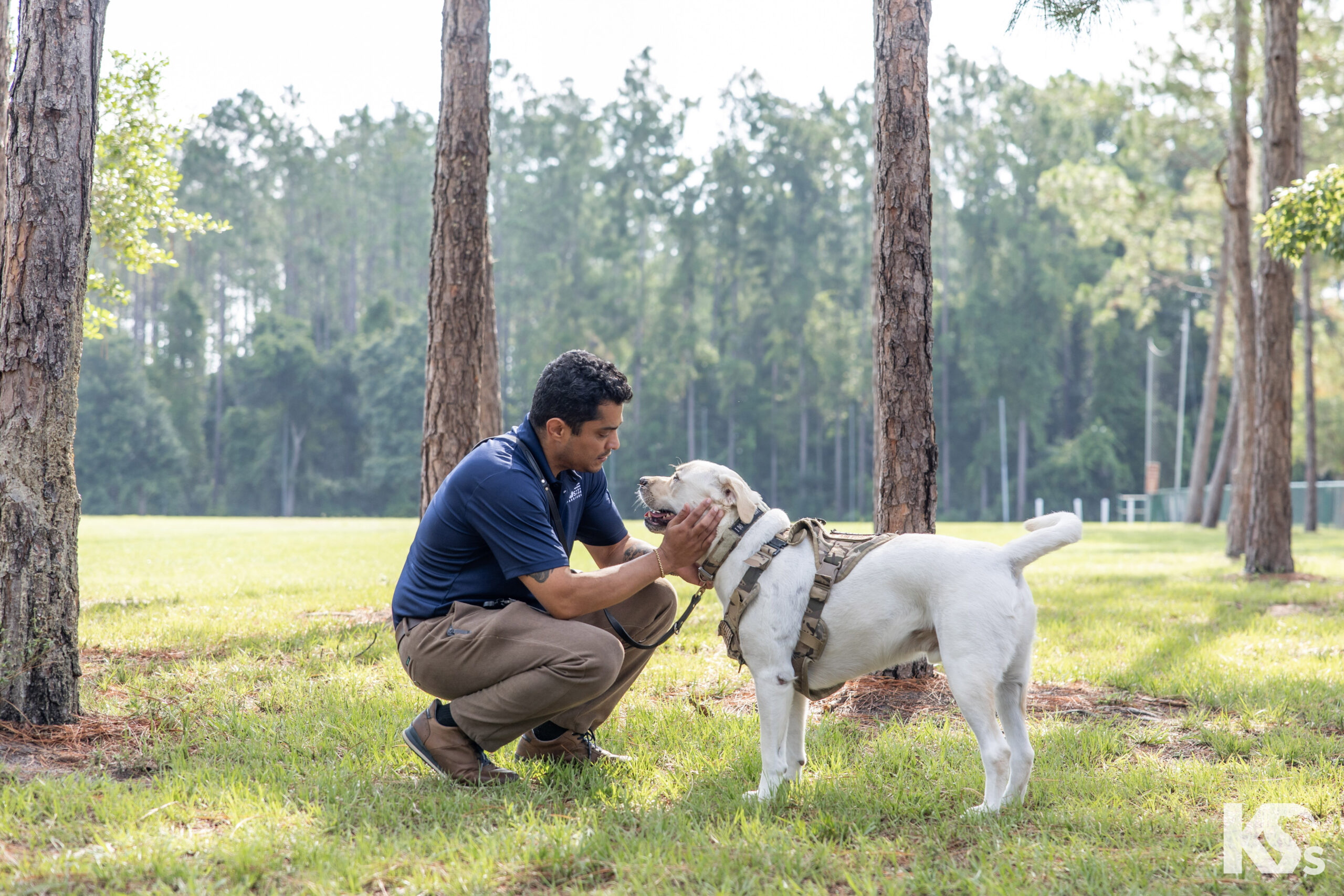How Rescue Dogs Can Be Trained to Heal Veterans
4 min read
Training is an essential part of owning a dog. At K9s For Warriors, we train dogs to heal our nation’s heroes.
February is Dog Training Education Month, an opportunity to highlight the amazing skills Service Dogs can be trained to do and how they can help Veterans struggling with PTSD. The commands our dogs learn can be the building blocks to a Warrior’s recovery.
How does a Service Dog help?
What kind of skills are they trained to do?
- Stand: The Service Dog stands in front of the Veteran with its front and back legs parallel to the Warrior’s shoulders to create a barrier and space between others.
- Brace: The Service Dog is in the “stand” position and the Warrior places their hands over the shoulders and back legs of the dog to brace up from a sitting or kneeling position to a standing position.
- Look: The Service Dog looks out for the Veteran and “has their back.” Many Veterans experience hypervigilance, especially in public, and need eyes on everyone, but struggle when they can’t see behind them. The dog moves to the Warrior’s right side and sits facing behind them to watch the Warrior’s back.
- Lap: The Service Dog puts their arms over the Warrior’s lap to provide deep compression therapy, helping to calm anxiety. The Warrior is seated while the dog puts its front legs on the Warrior’s lap.
- Front: The Warrior walks 6-10 feet away from the Service Dog. When given the ‘front’ command, the dog will return to the Warrior and sit in front of the Warrior, facing them. This is used primarily when going through a security checkpoint, like a metal detector.
- Under: The Service Dog goes under the Warrior’s legs, chair and/or desk/table. This command allows for the dog to stay in a down position to avoid being a tripping hazard to anyone moving around the Warrior. This command is especially helpful at restaurants or on airplanes.
Our dedicated trainers spend six to eight months preparing each dog for its future Warrior.
K9 Trainer Cameron demonstrates some of the commands our Service Dogs in training learn.
How do these commands work in real life scenarios?
If a Veteran is in a grocery store, he or she might put the Service Dog in a “look” command. The dog will stand on the Warrior’s right side and face the opposite direction, ensuring that the Warrior’s back is being watched. The skill might seem like a small gesture to the average person, but it can make the biggest difference in the Veteran’s confidence when out of their comfort zone. As the Warrior and Service Dog bond strengthens, the dog can learn how to help mitigate negative PTSD symptoms.
A staggering number of Veterans suffer from PTSD or other psychological disabilities attributed to serving.
- 29% of Afghanistan and Iraq War Veterans
- 21% of Gulf War Veterans
- Nearly 300,000 Vietnam Veterans
According to the most recent numbers from the VA, 6,407 Veterans died by suicide in 2022.
Training Rescue Dogs to be Service Dogs
At K9s, we are committed to saving as many lives as possible. That includes dogs from shelters, owner surrenders or even animal cruelty cases. Too often, these dogs aren’t given another shot at survival. K9s For Warriors is working to change that. Just because a dog has a rough past doesn’t mean it shouldn’t be loved. Our goal is to help the dog rebuild its trust and faith in humanity and begin its journey toward becoming a confident, life-changing Service Dog for a Veteran in need. It’s the work of our Procurement team, as well as the K9 Training team, that can help a shy, skittish dog find its full potential.

K9s For Warriors is saving lives at both ends of the leash by pairing Veterans, combat and non-combat, with highly trained Service Dogs. This study by Dr. Maggie O’Haire at the University of Arizona links the pairing of service dogs and military veterans to lowered PTSD severity, odds of a PTSD diagnosis and other negative mental health symptoms. In 2024, K9s rescued more than 200 dogs and gave them a new purpose.
K9s For Warriors provides highly trained Service Dogs at no financial cost to the Veteran. When Service Dogs identify their handler’s stressors, Veterans feel a renewed sense of confidence in their lives. Going to the grocery store, a crowded sporting event or even a loud concert is once again possible with their battle buddy by their side.
See below for a behind-the-scenes look at how K9s selects ideal Service Dog candidates from shelters.






